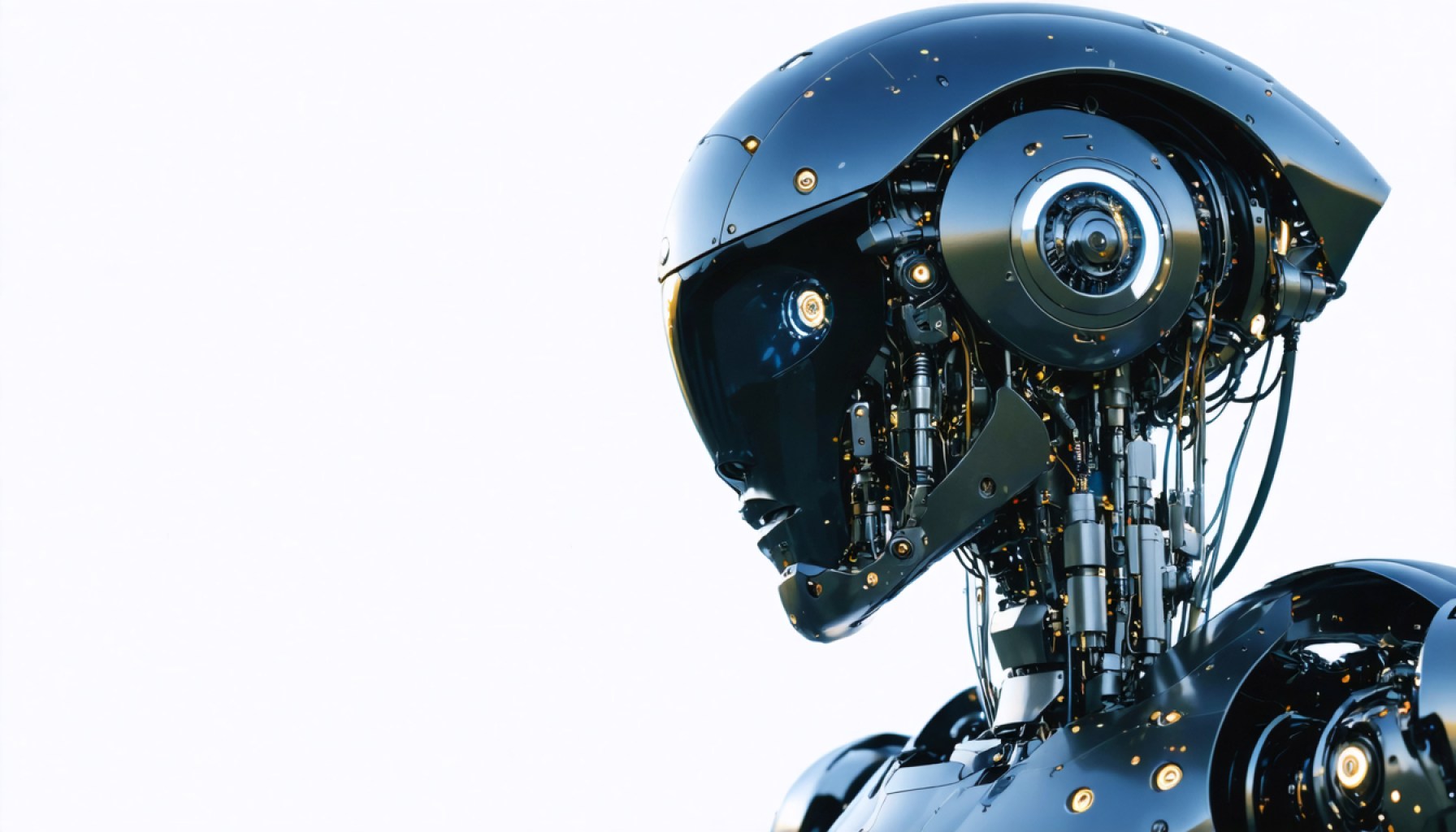- The Protoclone is celebrated as the world’s first bipedal, musculoskeletal android, sparking awe and concern.
- Developed by Clone Robotics, it showcases lifelike muscles and tendons, leading to mixed online reactions of fascination and unease.
- Designed to assist in household tasks like cooking and cleaning, it promises a new era of domestic automation without human physical limitations.
- Public reactions highlight concerns over the potential dystopian implications of such advanced robotics.
- As consumer preorders are set to begin, the balance of technological advancement and ethical considerations prompts reflection on the future of human-machine interactions.
Suspended in mid-air, the Protoclone twitched to life, sparking both awe and dread across the digital landscape. This eerily lifelike creation — deemed the “world’s first bipedal, musculoskeletal android” — showed off its human-like muscles and tendons, moving in a way that sent shivers down countless spines.
Crafted by Clone Robotics, the faceless mannequin jerked and twitched in a viral video, eliciting a storm of online reactions. It’s a marvel of engineering, yet its inception raises eyebrows and questions about our collective future. Viewers weren’t shy to express their concerns, with words like “dystopian” and “creepy” echoing through threads. Some wondered if humanity’s obsession with innovation is veering dangerously close to fiction’s darkest warnings.
A marvel on paper, this mechanical being promises to walk, talk, and tidy up like another set of human hands—minus the need for food or rest. Programmable to navigate kitchens, whip up sandwiches, and even engage in conversation, it’s designed to revolutionize domestic life. Its creators promise a partnership in everyday chores that’s straight out of futuristic dreams.
Yet beyond its sleek design and technical prowess lies a deeper question: at what cost do we embrace such automation? As the Protoclone gears up for consumer preorders, potential buyers must grapple with this blend of fascination and fear. While the robot mimics human anatomy with unparalleled precision, pumping water through its “vascular system” akin to our blood, it prompts us to reconsider the essence of life and labor.
Embrace this technological leap, perhaps, but keep an eye on its path—a journey where the lines between human and machine blur ever more ominously.
The Future of Home Robotics: Is the Protoclone a Game Changer or a Dystopian Nightmare?
How-To Steps & Life Hacks
While the Protoclone may not yet be available for direct consumer interaction, preparing for home robotics involves understanding the basics of integrating smart technology into your household. Begin by adopting smaller smart devices, like smart speakers and lights, to familiarize yourself with automation controls and ecosystems. Stay informed about firmware updates and learn the basic maintenance of robotic systems.
Real-World Use Cases
The Protoclone is designed to tackle domestic tasks, potentially revolutionizing household management. It could serve as a personal assistant, managing daily chores such as cleaning, cooking, and organizing. This robot can also function in healthcare settings, offering support to the elderly by performing physical tasks and ensuring medication adherence.
Market Forecasts & Industry Trends
According to MarketsandMarkets, the robotics industry is projected to grow from $76.6 billion in 2020 to $189.4 billion by 2027. The rise of AI-driven automation in home environments is expected, with companies like Clone Robotics leading the trend. Advances in machine learning, artificial intelligence, and biometric technologies are key trends driving this growth.
Reviews & Comparisons
The Protoclone can be compared to popular robotics such as Boston Dynamics’ Spot or SoftBank’s Pepper. While Spot is recognized for its agility and adaptability in enterprise environments, Pepper focuses on human interaction skills. The Protoclone sets itself apart by integrating human-like musculoskeletal systems, designed primarily for domestic automation.
Controversies & Limitations
Ethical concerns about the Protoclone center around privacy, job displacement, and the potential loss of human skills. There’s significant debate over how such technology might impact employment, as robots could replace human labor in many sectors. Additionally, there are fears about privacy intrusions, with robots potentially collecting data on domestic habits and conversations.
Features, Specs & Pricing
Details on the Protoclone’s exact specifications are still emerging, but it’s touted to have an advanced musculoskeletal system and AI integration for task management. Pricing has yet to be announced, but it’s expected to reflect its cutting-edge technology, likely placing it in a premium tier compared to other domestic robots.
Security & Sustainability
As with all AI-driven technology, ensuring robust cybersecurity for Protoclone systems is critical. Users need to be aware of data encryption and privacy settings. Sustainability concerns also arise, questioning the environmental impact of producing and maintaining such advanced machinery.
Insights & Predictions
As AI continues to evolve, the Protoclone represents a shift towards autonomous home management systems. Predictions suggest these robots will become household staples in the coming decades, potentially transforming how we manage domestic life similarly to how the internet and smartphones have altered daily routines.
Tutorials & Compatibility
Potential users should ensure compatibility with existing smart home ecosystems, such as Amazon Alexa or Google Assistant. Familiarity with mobile apps that control smart devices will be beneficial, as these likely function as interfaces for managing the Protoclone.
Pros & Cons Overview
Pros:
– Can handle repetitive domestic tasks, granting users more leisure time.
– Offers assistance to the elderly or disabled, improving quality of life.
Cons:
– High acquisition cost may be a barrier.
– Privacy and data security concerns persist.
– May contribute to job displacement and ethical dilemmas about human-machine roles.
Conclusion and Recommendations
For those intrigued by the Protoclone, consider the following steps:
– Keep informed about the robotics market and upcoming releases.
– Understand the implications of integrating such advanced robotics into your home.
– Prioritize cybersecurity and privacy measures in your current smart home setup.
Being aware of the ethical debates and potential technological dependencies will help navigate this emerging landscape. For more technology innovations, visit the main domain of Clone Robotics.











